Discover the best time to visit Angkor Wat with practical tips on avoiding crowds, choosing the...
3-Week Cambodia Itinerary: Past Whispers, Present Smiles
This 3-week Cambodia itinerary highlights the value of visiting by combining interests in culture, history, nature, adventure, and beaches to ensure you don’t miss any important places.
It begins at sunrise, as it so often does in Cambodia. The first light spills across the towers of Angkor Wat, turning the ancient stone a shade of gold that feels almost otherworldly. Monks in saffron robes move silently along the temple causeway, their reflections rippling in the moat. Dragonflies hover in the morning haze. Somewhere in the distance, a rooster crows.
For travelers, this is the image that draws them to Cambodia: timeless, mystical, and utterly captivating. Yet to truly know this country is to look beyond its postcard moments. Cambodia is not just a land of temples; it’s a story—one of endurance, beauty, and rediscovery.
The Spirit of Angkor (Three to Five Days—Ideally Five)
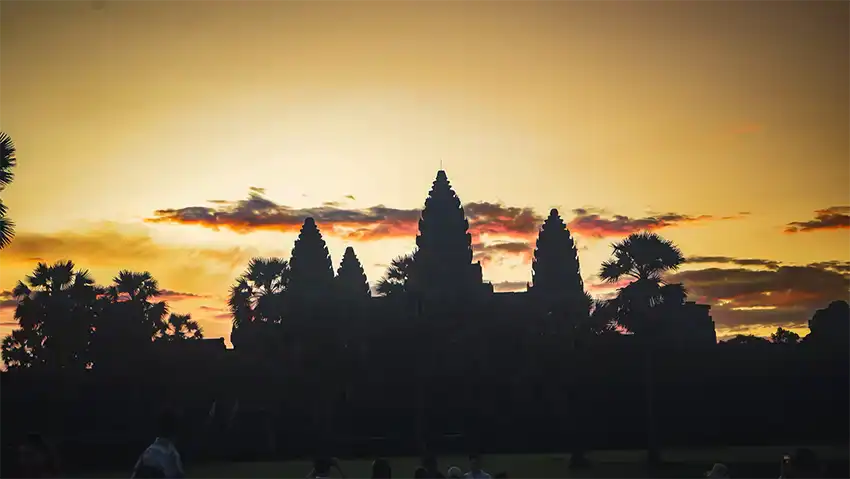
The temples of Angkor are more than monuments; they’re memories carved in stone. Built between the 9th and 13th centuries by the Khmer Empire, this vast complex was once the spiritual and political heart of Southeast Asia. Today, it’s an open-air museum of devotion, artistry, and imagination.
Visitors wander among the colossal faces of Bayon, serene and knowing, as if they’ve seen the rise and fall of empires. At Ta Prohm, strangler figs and silk-cotton trees twist their roots through broken walls, nature reclaiming what man once built. And at Banteay Srei, delicate pink sandstone carvings reveal the grace of a civilization long gone but never forgotten. These temples truly are an ancient wonder that is unrivaled in SoutheastAsia.
By midmorning, the jungle hums with cicadas, and the stone glows warm under the sun. Travelers rest in the shade, sipping coconuts, watching children cycle by. In Siem Reap, the modern town that thrives just a few kilometers away, life moves to a different rhythm—markets buzz with activity, chefs stir pots of curry, and travelers trade stories over ice-cold Angkor beers.
Angkor may be the reason people come to Cambodia. But it’s rarely the reason they stay.
Phnom Penh: Grace and Grit on the Mekong (One to Two Days—Ideally Two)
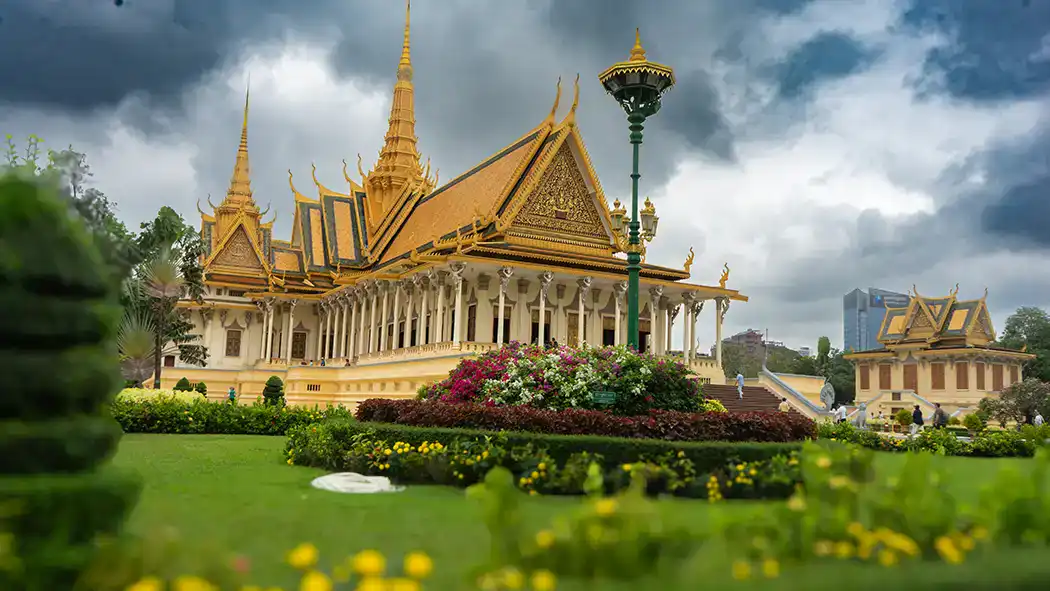
If Angkor is Cambodia’s heart, Phnom Penh is its pulse, which is fast, unpredictable, and full of contradiction. The capital city sits where the Mekong and Tonlé Sap Rivers meet, the streets alive with tuk-tuks, motorbikes, and the scent of grilled corn.
The Royal Palace rises in shimmering gold, a reminder of Cambodia’s regal elegance. Nearby, the Silver Pagoda glitters with thousands of silver tiles and a diamond-encrusted Buddha. The riverside promenade comes alive at dusk: families stroll, vendors sell lotus blossoms, and fishermen cast lines into the current.
Yet Phnom Penh carries a heavy past. The Tuol Sleng Genocide Museum and Choeung Ek Killing Fields are places of profound sorrow. These are sites where visitors walk quietly, reading names, staring at photographs, and reflecting on a tragedy that’s still within living memory.
It’s impossible to visit without being moved. But Phnom Penh isn’t defined by its scars. It’s defined by its recovery, by the laughter of schoolchildren, the creativity of young artists, and the entrepreneurial spark that fills cafés and co-working spaces.
This is a city in transition, graceful yet gritty, chaotic yet charming. It teaches visitors something vital: that resilience can be beautiful.
Sihanoukville and the Islands (Three to Five Days)
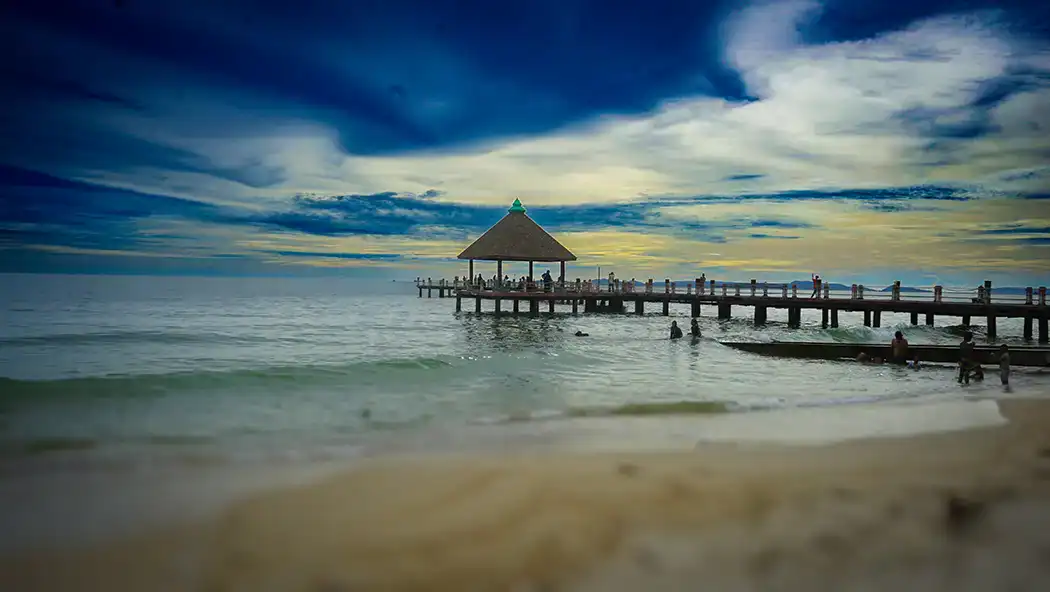
South of Phnom Penh, the landscape changes. The air thickens with salt and the smell of rain. The road winds past coconut palms and red-dirt villages, leading toward Cambodia’s coast, one of Southeast Asia’s most underrated treasures.
The gateway is Sihanoukville, a city that has transformed rapidly in recent years, but just offshore lie the islands of dreams: Koh Rong, Koh Rong Sanloem, and Koh Ta Kiev, each with its own rhythm and charm.
On Koh Rong, barefoot travelers walk along Long Beach, where the water is so clear it seems lit from beneath. At night, the sea itself glows with bioluminescent plankton, tiny sparks of light in the surf. Koh Rong Sanloem, quieter and more soulful, offers hammocks, yoga decks, and sunsets that melt into the horizon.
Kampot and Kep (One to Two Days)
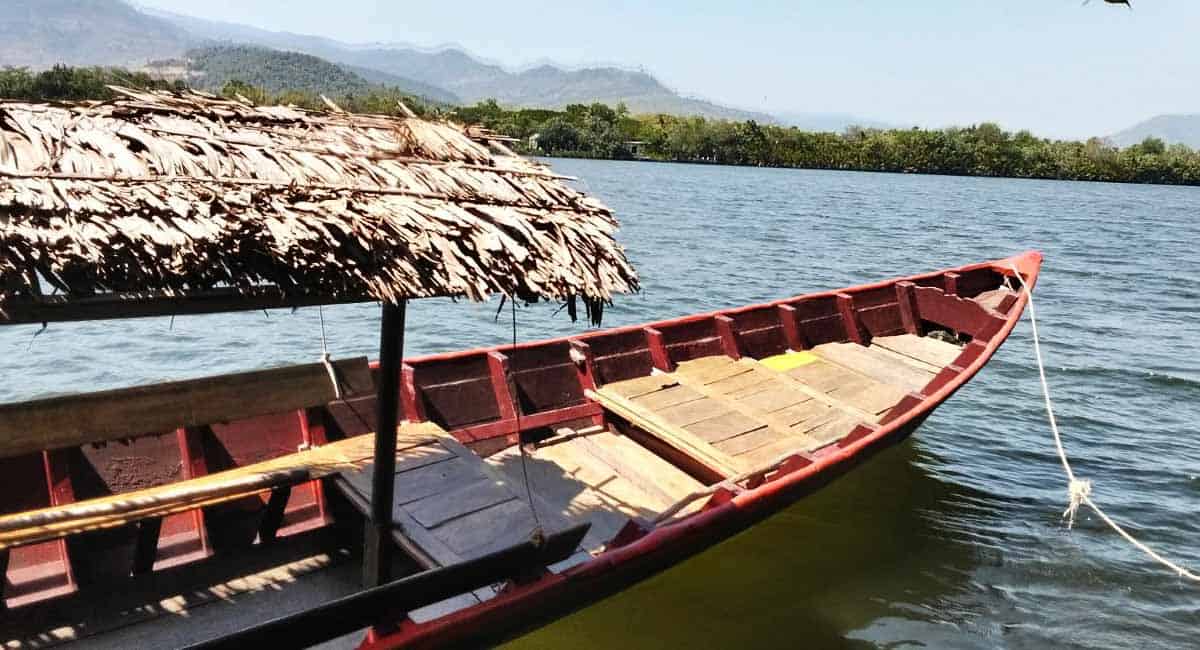
Further east, the towns of Kampot and Kep invite slower exploration. Kampot, nestled along a lazy river, feels like stepping back in time. Colonial villas line the waterfront, and old shopfronts have been turned into bakeries, art galleries, and bohemian guesthouses. The area’s famous pepper plantations, highly prized by French chefs, are still producing what many consider the world’s best peppercorns.
Kep, just half an hour away, was once a glamorous seaside resort for the elite. Today it’s tranquil, shaded by trees, and famous for its crab market, where fishermen pull in their catches and cook them on the spot with fragrant Kampot pepper sauce. The air smells of sea salt and spice, and the sound of sizzling woks mingles with the crash of the waves.
Here, time seems to pause.
Battambang: The Soul of the Countryside (One to Two Days)

Away from the temples and beaches, Battambang offers a glimpse into Cambodia’s rural heart. Life here moves to the rhythm of the seasons, rice fields turning from emerald to gold, children splashing in irrigation canals, and ox carts rumbling down dirt tracks.
The town itself is an artist’s haven, its quiet streets lined with colonial-era buildings and community art spaces. Travelers explore by bicycle, drifting past local workshops where families make rice paper, banana chips, and sticky rice in bamboo tubes.
The famous Bamboo Train, a quirky wooden platform powered by a small engine, gently rattles through the countryside, carrying passengers past palm trees and fields of sugarcane. In the evening, visitors gather near the Bat Cave at Phnom Sampeau to watch millions of bats pour from the cliffside, spiraling into the sky in a living cloud.
Battambang may not have the grandeur of Angkor or the gloss of Phnom Penh, but it has something rarer: authenticity. It’s a place that reveals Cambodia’s quiet grace, one smile at a time.
The Cardamom Mountains: Cambodia’s Wild Frontier (Two to Five Days—Depending on Hikes or Other Day Trips)
To the west, the Cardamom Mountains rise in mist and mystery, one of the last great wildernesses of Southeast Asia. This vast region of rainforest, rivers, and remote villages feels worlds away from Cambodia’s tourist hubs.
Once a refuge for soldiers and smugglers, the Cardamoms are now a haven for wildlife: elephants, gibbons, hornbills, and the rare clouded leopard all roam these forests. Eco-lodges and community-run projects have sprung up along the rivers, offering travelers a chance to explore responsibly by kayaking through mangroves, trekking to hidden waterfalls, or sleeping in floating tented camps under a canopy of stars.
Here, the air is cooler, and the nights are alive with the calls of cicadas and frogs. Travelers describe it as the “Cambodia before time,” a reminder of what much of Southeast Asia once looked like. It’s raw, untouched, and truly alive.
The River Life of Kratie (One Night, Two Days)

Further north along the Mekong lies Kratie, a small riverside town with an old-world charm. Wooden houses overlook the water, and the sunsets here are legendary streaks of orange and violet reflected in the slow, endless river.
But Kratie’s greatest treasure lies within that river: the Irrawaddy dolphins, one of the world’s rarest species. Boat trips at Kampi give visitors the chance to see these gentle, grey creatures surface in quiet pods, their curved backs breaking the water with a whisper.
Kratie is also a place to slow down to cycle along the island of Koh Trong, where ox carts still rumble along sandy tracks and villagers greet you with warm smiles. It’s Cambodia at its most peaceful, unhurried, and pure.
The Highlands of Mondulkiri (Two to Three Days)
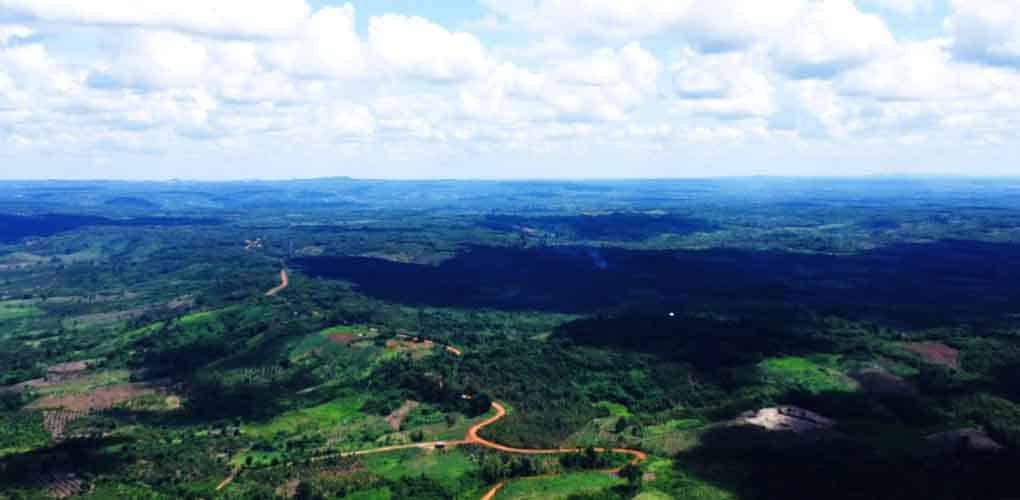
In the far east, the roads climb toward the cool, forested plateaus of Mondulkiri. Cambodia’s wild highlands. The air here is crisp, the hills carpeted with pine trees and coffee plantations. Waterfalls tumble through jungle valleys, and elephants roam the forests once again, cared for in ethical sanctuaries run by local Bunong communities.
Visitors come to Sen Monorom, the region’s sleepy capital, for treks and homestays with indigenous families. Evenings bring campfires, traditional rice wine, and stories told under a galaxy of stars. It’s a world apart serene, sincere, and deeply connected to nature.
Mondulkiri reminds travelers that Cambodia is not only ancient temples and flat rice plains; it’s also mountains, forests, and a heartbeat that still echoes through the land.
Flavors of a Nation
Cambodian food, or Khmer cuisine, is a revelation for those who take the time to explore it. It’s subtler than Thai food, lighter than Vietnamese, and deeply rooted in balance and freshness.
The national dish, Fish Amok, is a silky curry steamed in banana leaves. It’s a gentle blend of coconut, lemongrass, and galangal. Lok Lak, stir-fried beef served with rice and lime-pepper sauce, reflects the influence of French colonialism. And Nom Banh Chok, a fragrant noodle soup, is the breakfast of choice for millions of Cambodians.
Street food is everywhere: skewered meats grilled over charcoal, bowls of noodles topped with herbs, and iced coffee sweetened with condensed milk. In the markets, the adventurous can sample everything from fried crickets to tropical fruits like rambutan, mangosteen, and dragon fruit.
But perhaps the best meals are those shared at family tables, roadside stalls, or with newfound friends. In Cambodia, food is connection.
The Heart of the People
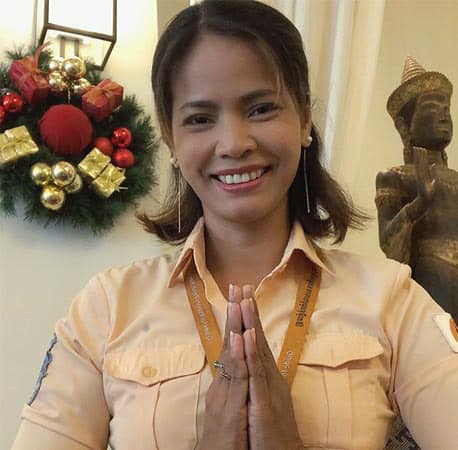
Ask anyone who has traveled through Cambodia what they remember most, and they’ll likely say: the people.
Despite a history that would have broken many nations, Cambodians radiate warmth and dignity. Their smiles are genuine, their curiosity endless. In the countryside, strangers wave as you pass. In cities, vendors teach you how to say “thank you” “or-kun,”you,” and laugh when you mispronounce it.
Buddhism shapes much of daily life here. Monks collect alms at dawn, temples echo with chants, and festivals bring entire communities together. The Khmer New Year in April fills the streets with music, water fights, and laughter, while the Water Festival in November transforms Phnom Penh into a carnival of boat races and celebration.
There’s a quiet wisdom in Cambodia, a sense that no matter what has happened, joy will return. And it always does.
Things to Know Before You Go
- Visas: Most travelers can get a visa on arrival, or I recommend applying for an e-visa online before entry. Allow a few days for processing and print out the visa when granted. It’s quick, inexpensive, and valid for 30 days.
- Currency: Cambodia officially uses the Riel (KHR), but the US dollar is accepted everywhere. Expect change in riel for small amounts. ATMs dispense both.
- Best Time to Visit: The dry season runs from November to April, offering ideal weather for temple-hopping and coastal escapes. The green season (May–October) brings dramatic skies, lush countryside, and fewer tourists Connectivity: Wi-Fi is reliable, advertised though not fast, and local SIM cards are cheap. The country is catching up fast on infrastructure. Power cuts are still somewhat regular in the less developed parts of the country.
- Health & Safety: Cambodia is generally safe and welcoming. Petty theft can happen in tourist spots, so keep an eye on belongings. Drink bottled water, and pack sunscreen—the sun can be intense.
- Culture & Etiquette: Dress modestly at temples (shoulders and knees covered), remove shoes before entering homes or pagodas, and always greet with a slight bow and smile.
- Costs: Cambodia remains excellent value. Budget travelers can live comfortably on $30–40 a day, mid-range comfort sits around $60–100, and boutique or eco-luxury options rarely exceed $200 a night.
Why Cambodia Stays with You

To travel in Cambodia is to journey through contrasts between grandeur and simplicity, sorrow and hope, and stillness and celebration.
It’s standing before the ruins of Angkor, feeling the weight of centuries. It’s laughing with a tuk-tuk driver in Phnom Penh traffic. It’s watching a crimson sunset over the Kampot River, trekking through Mondulkiri’s forested hills, or listening to the soft breath of an Irrawaddy dolphin on the Mekong.
Cambodia lingers long after you leave, not because of what you saw but because of what you felt.
As one traveler wrote in the guestbook of a riverside hostel:
“Cambodia isn’t a place you visit. It’s a place that changes you.”
Cambodia Travel Itinerary is Recommended
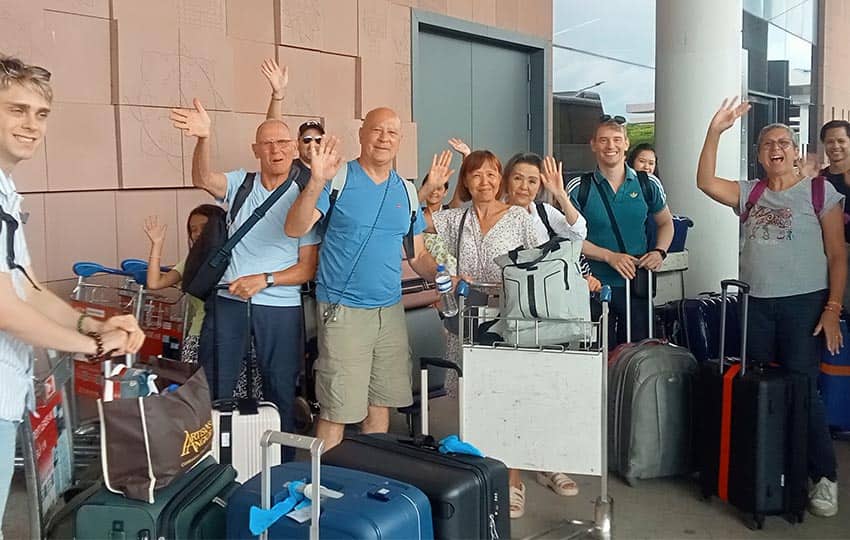
Rain Proun offers private tour guide cambodia in English and French. With over ten years of experience, you are guaranteed a truly memorable and beautiful trip where all the little details are taken care of for you. Trips can be catered Cambodia itinerary 3 weeks or how long you have, what your interests are, and what you wish to see in this enchanting and magical land.
5-star reviews on TripAdvisor and Google. Sit back and enjoy a fully serviced and thoughtfully planned trip.
Final Thoughts,
This three-week plan for Cambodia emphasizes the significance of travel by integrating interests in culture, history, nature, adventure, and beaches across Siem Reap, Phnom Penh, Battambang, Kep, Kampot, and Koh Rong. Cambodia is a valuable destination, and I wish to remain for tranquility and to appreciate the stunning landscape and amiable inhabitants. For seamless and comfortable private excursions in Cambodia, consider using the guided tour service, Rain, to optimize your budget while directly supporting a local guide. He is a genuinely kind individual and provides assistance with your journey.
Create your own tour, you can reserve your trip the way you want it. There are no extra fees or hidden costs.
My name is Rain. I have over 12 years of experience as a local personalized tour guide specializing in private Angkor Wat tours and organizing tours tailored to specific interests in temples and cultural experiences in Siem Reap, Phnom Penh, Battambang, and beyond.
I love traveling and sharing my personal travel experiences through written articles to help others before they make their bookings.
Related Posts
You are considering a trip to Cambodia, are you? Check out some of the travel advice that I have derived from my own personal experiences.
14-Day Cultural Cambodia Itinerary For What to See & Do
Comprehensive Guide to a Cultural Itinerary in Cambodia Spend two weeks discovering the local culture, temples,...
Tours to Angkor Wat: Tailored for Adventure Seekers
Discover tailored tours to Angkor Wat for adventure seekers. Explore hidden jungle paths, remote temples like...